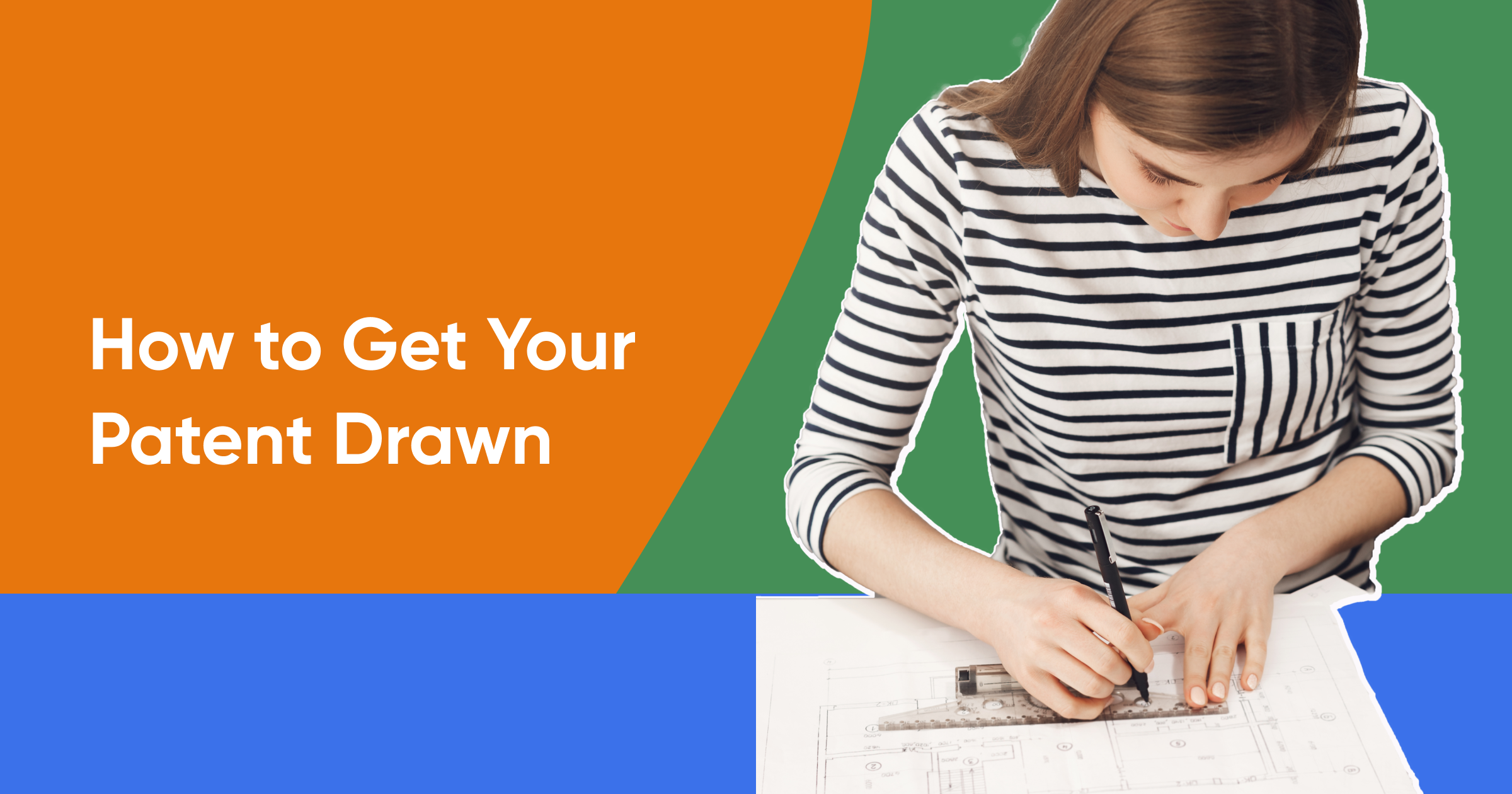Amrusha Chati
07 December 2023 • 3 min read

You have a fantastic invention and want to get patent protection for it. But hold on a second! Before claiming your intellectual property, an essential step is completing your patent drawings.
These drawings aren't just sketches. They're the visual blueprints that bring your invention to life on paper.
For a design or utility patent, these communicate the essence of your creation to patent examiners. In the world of intellectual property, patent drawings play a crucial role. They provide clarity and precision to complement your written description.
Now, you might wonder, how do I even go about that? How can I turn my invention into an image that follows the strict USPTO rules?
Fear not, dear inventors! Here's a breakdown of how to do your own technical drawing for patent applications:
This is the best solution if you're wondering how to make your own patent drawings and save thousands. Creating a patent drawing for your patent application might seem daunting, but don’t worry!
For relatively straightforward inventions, taking the DIY route can be surprisingly feasible. You don't have to be a modern-day Picasso to make good patent drawings. All you need is attention to detail and the ability to follow guidelines.
Even if you have some prior art, you may need to make significant changes. The US Patent and Trademark Office (USPTO) has strict rules for drawings in patents. There are many details to consider, like:
To ensure your drawings meet patent standards, familiarize yourself with these guidelines.
Doing it yourself is cheap, but bear in mind that spending time learning and doing it right is crucial.
Creating accurate drawings is essential to ensure success in the patenting process. Not following the guidelines might cause problems or lead to rejection by the USPTO patent examiner.
Not quite confident in your steady hand to create your patent illustration? Enter the world of Computer Aided Design (CAD) software.
If you’re hesitating due to your lack of drawing expertise, CAD is your saving grace.
This technology empowers inventors by providing tools to create precise, professional-looking patent drawings.
The CAD patent illustrator software helps you accurately show every detail of the design of your invention. Despite the learning curve and cost (ranging from a few hundred dollars to more advanced packages), the benefits are ultimately worth it. CAD can simplify drawing by creating precise shapes, lines, and measurements.
However, it's important to note that proficiency in using CAD software requires time and practice. Before you start working on your patent drawings, take some time to learn how the program works.
If you don't want to be involved or your inventions are complicated, hire a professional patent illustrator.
You could hire skilled patent illustrators or drafting services for a fee.
While this option can be pricier, ranging from $75 to $150 per page on average, it offers peace of mind. These experts know how to make patent drawings that meet the USPTO's rules and guidelines. And their expertise can be beneficial in preparing patent illustrations that demand high precision.
When you need help, pick a reliable company that can make patent drawings. Check their portfolio and ask for recommendations to ensure they can accurately show your invention.
Alternatively, some patent attorneys also offer these services. You can consider hiring a patent attorney who is well-versed in patent law and CAD software to help you with patent illustration.
Whichever route you choose, remember the goal is to accurately depict your invention. Whether you are using a pencil or CAD program, you must be precise and follow guidelines.
If you opt for the DIY path, embrace those guidelines like they're the key to your invention's kingdom. If you're working with software or professionals, ensure they know about patent drawing details.
Lastly, take a moment to consider your invention's complexity. You can combine CAD and your artistic side for different project parts.
At the end of the day, your patent drawings are the visual storytellers of your invention. So, choose the approach that best suits your style, expertise, and, of course, your invention's needs. Happy drawing, inventors!
To create patent drawings, you can (1) hire a professional illustrator or drafting company or (2) draw them yourself. Both approaches have pros and cons. Either way, it’s important to adhere to the USPTO guidelines.
The expense of patent drawings varies based on their intricacy and the number of sheets required. Generally, for each sheet, the price might fluctuate from approximately $75 to $150, contingent on how complex the depicted invention is.
Patent drawings, essential components of the patent application, are typically not restricted by copyright, according to the United States Patent and Trademark Office (USPTO). Nevertheless, it's recommended to assess the usage rights individually.
AUTHOR
Amrusha is a versatile professional with over 12 years of experience in journalism, broadcast news production, and media consulting. Her impressive career includes collaborating extensively with prominent global enterprises. She garnered recognition for her exceptional work in producing acclaimed shows for Bloomberg, a renowned business news network. Notably, these shows have been incorporated into the esteemed curriculum of Harvard Business School. Amrusha's expertise also encompassed a 4-year tenure as a consultant at Omidyar Network, a leading global impact investing firm. In addition, she played a pivotal role in the launch and content strategy management of the startup Live History India.
Related Blogs

How to Renew a Trademark: A Guide That M...
17 May 2024 • 5 min read

How to Trademark a Name | Exploring the ...
17 May 2024 • 8 min read
.png%3Falt%3Dmedia%26token%3D61e4c1a1-34ee-427f-8cbe-48da50784682&w=256&q=75)
Will Palworld Get Copyrighted? (+ the Po...
17 May 2024 • 5 min read

7 Tips to Protect Your Business from Bra...
17 May 2024 • 8 min read

Can OpenAI Trademark GPT? (It’s Not That...
17 May 2024 • 3 min read